In West Bengal, the Mamta Banerjee government has time and again proved that Trinamool Congress is one of the most popular regional party in India. The credits of the popularity go to the strong leadership of Mamta Banerjee who has guided the party in the right direction. Born (5 January 1955) & brought up in a lower-middle-class family by Promileswar Banerjee & Gaytri Devi in Brahmin Bengali family of Kolkata, Mamta Banerjee had an ordinary childhood. Her father died due to lack of medical treatment when Mamta was only 17 years old.In the men’s world, she proved she was there to rule. Let’s have a look what made, an ordinary girl ‘Didi’ of Bengal – the first women chief mister of Bengal throne.
Mamta Banerjee – Early life and education:
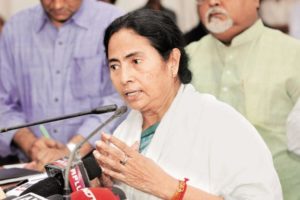
Mamta Banerjee belonged to a lower-middle-class Brahmin family.In 1970; Mamta completed her higher secondary board examination from Deshbandhu Sishu Sikshalay. She graduated with an honors degree in history from the Jogamaya Devi College. Later she earned a master’s degree in Islamic history from the University of Calcutta. This was followed by a degree in education from the Shri Shikshayatan College. She also earned a law degree from the Jogesh Chandra Chaudhuri Law College, Kolkata. She was honored with a Doctor of Letters from Kalinga Institute of Industrial Technology (KIIT). She is a creative artist with flair in poem writing & oil paintings & also she authored over twenty books and created over 5000 oil paintings. She made her political entrance when she was only 15 by establishing ‘Chhatra Parishad Union’, a student’s wing of Congress party, in Jogamaya Devi College & defeated the Democratic Students’ Union of the Socialist Unity Centre of India & got a kick start in her political career under Congress.
Mamta Banerjee initially worked in Congress:
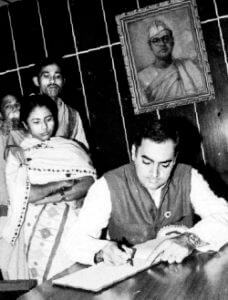
Mamta Banerjee’s journey as a politician started in Congress during her graduation period as a student union member & sooner promoted to local ranks in the Congress. She became general secretary of Mahila Congress West Bengal from 1976-1980. In the 1984 general election, she became one of India’s youngest parliamentarians ever, defeating veteran Communist politician Somnath Chatterjee, to win the ‘Jadavpur parliamentary Constituency in West Bengal’. She also became the general secretary of the Indian Youth Congress. She was re-elected in 1991 general elections into the ‘Calcutta south constituency’, after her loss in anti- congress wave in 1989 &she continued to retain the south Calcutta seat 1996,1998,1999,2004.2009 general election. During the Rao government formed in 1991, she was made the Union Minister of State for Human Resources Development (HRD), Youth Affairs and Sports, and Women and Child Development. But she resigned from her cabinet to protest against the Government’s indifference towards her proposal to improve sports in the country. She also alleged Congress behaving as a subordinate of the CPI-M in West Bengal.
Formation of Trinamool Congress (Mamta Banerjee Government)
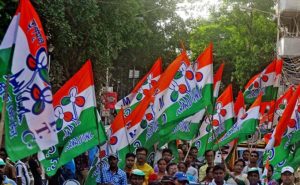
In 1997, Mamta left the Congress Party in West Bengal and established the ‘All India Trinamool Congress’ (TMC). It quickly became the primary opposition party to the long-standing Communist government in the state. The ideology of the party was to make all-round development of India in the political, economic, industrial, social, cultural, agricultural sectors and to establish India as a global power keeping in view the multi-lingual, multi-faceted, multi-ethnic, rich culture and heritage of India.&
To uphold and adhere, with true faith and allegiance, to the Constitution of India as by law established, work for the furtherance of the principles of Nationalism, Socialism, Secularism, and Democracy. & also contribute towards eradicating illiteracy, poverty, and injustice etc. TMC won two consecutive elections under Mamta from 2011-2014, & still ruling in Bengal. Also, the remarkable thing about Mamta’s victory was that TMC not only made government by holding a two-thirds majority, they also defeated Communist party of India (Marxist) & bring an end to a 34-year-old regime of Buddhadeb Bhattacharjee’ CPI-M in West Bengal.
Mamta Banerjee Government alliance with NDA(BJP) and UPA(Congress):
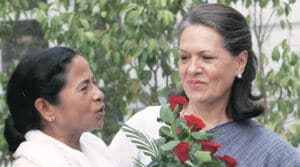
Earlier TMC was not a national party but played a significant role in government making by supporting the UPA & NDA alliance time to time. That’s why Mamta held cabinet ranks such as HRD minister (1991) & railway minister (2009) under UPA & railway minister (2002) under NDA government. During her first tenure as railway minister under NDA government, she fulfilled many of her promises to her home state West Bengal & majorly focused on the development of Bengal. She introduced a new biweekly ‘New Delhi-Sealdah Rajdhani Express’ train and four express trains connecting various parts of West Bengal, namely the Howrah-Purulia ‘Rupasi Bangla Express, ‘Sealdah-New Jalpaiguri Express’, ‘Shalimar-Adra Aranyak Express and the ‘Sealdah-Amritsar Superfast Express’ (weekly).
Mamta Banerjee also increased the frequency of the ‘Pune-Howrah Azad Hind Express’ and the extension of at least three express train services. Work on the Digha-Howrah Express service was also hastened during her brief tenure.She also focused on developing tourism, enabling the ‘Darjeeling-Himalayan’ section to obtain two additional locomotives and proposing the ‘Indian Railway Catering and Tourism Corporation Limited’. She also commented that India should play a pivotal role in the ‘Trans-Asian Railway’ and that rail links between Bangladesh and Nepal would be reintroduced. In all, she introduced 19 new trains for the 2000–2001 fiscal years. After her short tenure of one year, she resigned from her post to protest against the corruption charges against senior ministers of NDA government exposed by Tehelka.com (operation west end).
Read more: West Bengal Civic Polls: Why BJP Is The Biggest Gainer?
After separation from the two alliances, Mamta Banerjee suffered setbacks in 2005 when her party lost control of the Kolkata Municipal Corporation and the sitting mayor defected from her party. In 2006, the Trinamool Congress was defeated in West Bengal’s Assembly Elections, losing more than half of its sitting members. Also in 2006, she hurled her resignation papers at the deputy speaker Charanjit Singh Atwal in Lok Sabha; she was provoked by Speaker Somnath Chatterjee’s rejection of her adjournment motion on illegal infiltration by Bangladeshis in West Bengal on the grounds that it was not in the proper format.
But after the harsh downfall, she forged an alliance with UPA led by Congress before the 2009 general elections. The alliance won 26 seats. Banerjee joined the central cabinet as the railway minister (second tenure) & in her second tenure; her focus remained on West Bengal. She led Indian Railways to introduce a number of non-stop ‘Duronto Express’ trains connecting large cities as well as a number of other passenger trains, including women-only trains. ‘The Anantnag-Qadigund segment of the Jammu–Baramulla’ line that had been in the making since 1994 was inaugurated during her tenure. She also declared the 25 km (16 mi) long line-1 of the Kolkata Metro as an independent zone of the Indian Railways. But she stepped down as railway minister to become the chief minister of West Bengal.
In the 2010 Municipal Elections in West Bengal, TMC won Kolkata Municipal Corporation by a margin of 62 seats. TMC also won Bidhan Nagar Corporation by a seven-seat margin.
In 2011, Mamta Banerjee won a sweeping majority and assumed the position of chief minister of the state of West Bengal. Her party ended the 34-year rule on the Left Front. TMC won the elections of 2016 with a landslide two-thirds majority under Mamata, winning 211 seats out of total 293, who has been elected as Chief Minister West Bengal for the second term. TMC won with an enhanced majority contesting alone and became the first ruling party to win without an ally since 1962 in West Bengal. & still continues to rule without any alliance.
Struggle and achievement of Mamta Banerjee Government:

Ever since she joined the politics her struggle remained against illegal land acquisition & foreign investments. Like in 2005, she protested against the forceful land acquisition and the atrocities perpetrated against local farmers in the name of the industrial development policy of the Buddhadeb Bhattacharjee government in West Bengal. Benny Santoso, CEO of the Indonesia-based ‘Salim Group’ had pledged a large investment in West Bengal, and the West Bengal government had given him farmland in Howrah, sparking protests. In the soaking rain, Mamta Banerjee and other Trinamool Congress members stood in front of the Taj Hotel where Santoso had arrived, shut out by the police. Later, she and her supporters followed Santoso’s convoy. A planned “black flag” protest.In 2006; she was forcibly stopped on her way to Singur for a rally against a proposed Tata Motors car project.
Mamta Banerjee reached the West Bengal assembly and protested at the venue. She addressed a press conference at the assembly and announced a 12-hour shutdown by her party.
In 2012, she withdraws her support from UPA government for allowing FDI (foreign direct investment) in retail & hike in the price of petrol & diesel.
In 2007 Nandigram protest where 14 villagers were shot dead & 70 were injured by police, where they were protesting against allocating there 10,000 acres land to ‘Salim Group’ for developing a special economic zone (SEZ). Mamta wrote a letter to PM Manmohan Singh to stop this violence & alleged it to be sponsored by the state.This protest helped her to gain victory against CPI-M in 2011. After her 2011 victory, she returned the 400 acres land to Singur farmers where she was protesting against TATA (land acquisition).
Mamta Banerjee Government has also been credited with resolving the longstanding Gorkhaland related violence by setting up the ‘Gorkhaland Territorial Administration’. She began various reforms in the education and health sectors. Some of the reforms in the education sector included the release of teachers’ monthly pay on the first of every month & quicker pensions for retiring teachers. In the health sector, Banerjee promised: “A three-phase developmental system will be taken up to improve the health infrastructure and service.” In 2015, a representative of UNICEF India congratulated the government for making Nadia the first Open Defecation Free district in the country.She was also instrumental in the suspension of FDI in the retail sector until a consensus is evolved. In a bid to improve the law and enforcement situation in West Bengal, police ‘commission rates’ were created at Howrah, Barrackpore, Durgapur-Asansol, and Bidhannagar. The total area of Kolkata Municipal Corporation has been brought under the control of the Kolkata Police.
Mamta Banerjee Governement had shown a keen interest in making the public aware of the state’s history and culture. She named several stations of the Kolkata Metro after freedom fighters. West Bengal has GSDP (gross state domestic product) of US$ 120 billion & stands on the 5th number amongst all states (2014-15). The current literacy rate under Mamta government is 77.08% that is above the average literacy rate of the country that is 74.04%. Being as railway minister Mamta has devoted her special attention towards railway development of West Bengal. In 2016, TMC was recognized as a ‘national party’ (as it is recognized state party in West Bengal Manipur Tripura & Arunachal Pradesh).
Controversies surrounding Mamta Banerjee government:
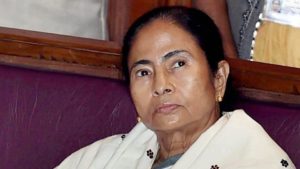
From being the youngest(women) cabinet holder to dragging Daroga Prasad Saroj (Samajwadi party’s MP) by the collar from Lok Sabha for protesting against Women’s reservation bill, Mamta has been surrounded by these controversial headlines since the begin of her career. Mamta government has been criticised for appeasing one minority (Muslim) community. As from the past two years, she has been ordering a ban on Durga idol immersion as it was clashing with Muharram (Kolkata high court overturned the decision both the years). Not only her biased decision for Muslim votes, he has been criticised for her comments like “more free interaction between men and women” causing rapes & increasing the number of eve-teasings she said
“Earlier if men and women would hold hands, they would get caught by parents and reprimand but now everything is so open. It’s like an open market with open options’.
Reuters has reported that “Her two-year record as railway minister has been heavily criticized for running the network into more debt to pay for populist measures such as more passenger trains.” The Indian Railways became loss-making during her two-year tenure. (2009-11). The Saradha Group financial scandal and the Rose Valley financial scandal came to light during her tenure and some of her cabinet ministers were accused of money laundering and have been incarcerated. She has been alleged of not taking action against her own party member’s deeds. Her party has also been criticised for religious uprising & riots. Like religious violence broke-out between the Hindu and Muslim communities under Banerjee’s tenure particularly the 2013 Canning riots, the 2015 Nadia riots, the 2016 Kaliachak riots, the 2016 Dhulagarh riots and the 2017 Baduria riots. Opposition parties and political commentators accused her of blatant Muslim appeasement and allowing a breakdown of law and order during riot situations.
How Mamta Banerjee Government going to perform:
Beside of being charged with numerous corruption charges like Shradha chit-fund, Nadara sting operation, corruption in the state public work department, etc. Mamta government still has a stronghold in Bengal & seems like it won’t be easy to uproot Didi’s flower in Modi wave.
